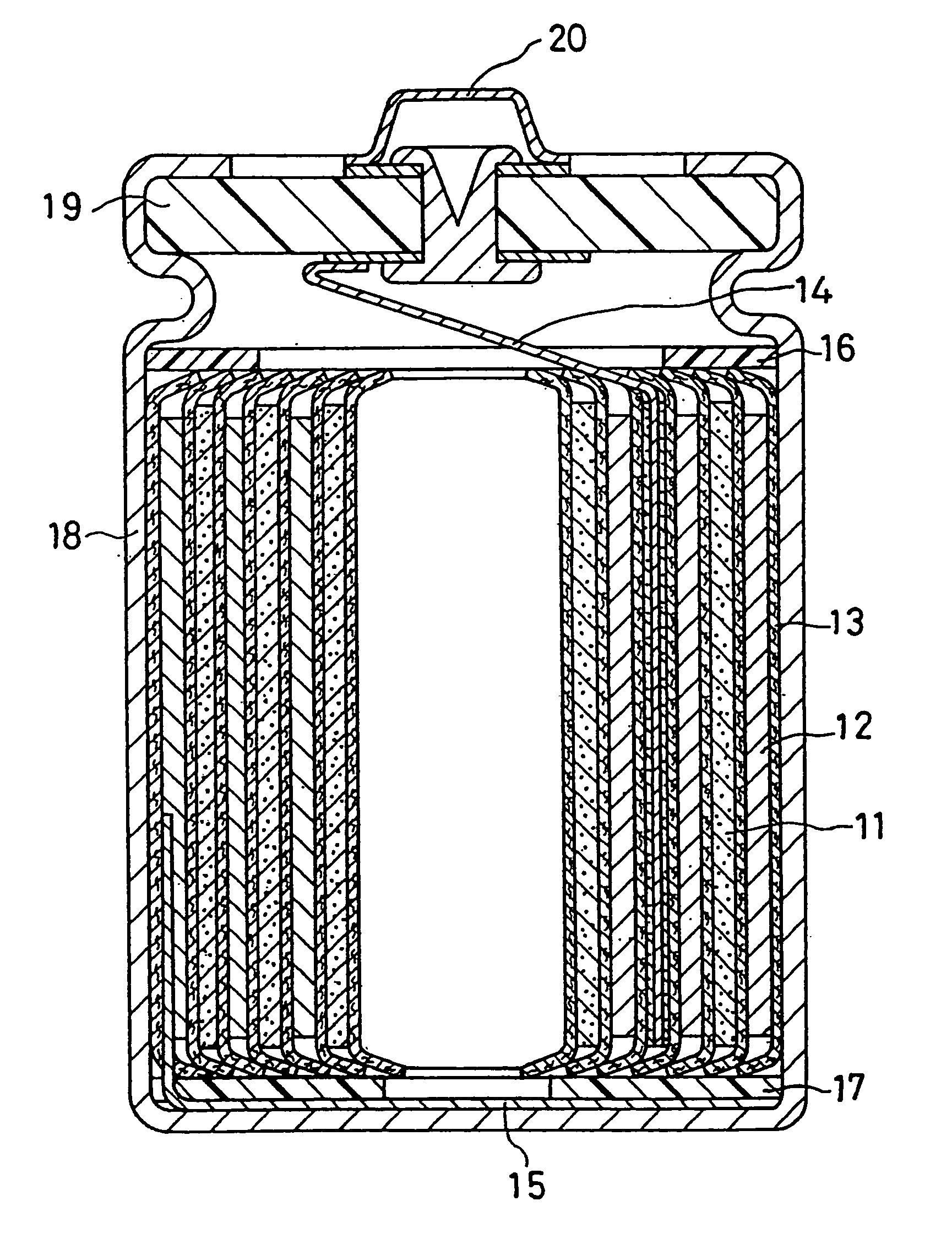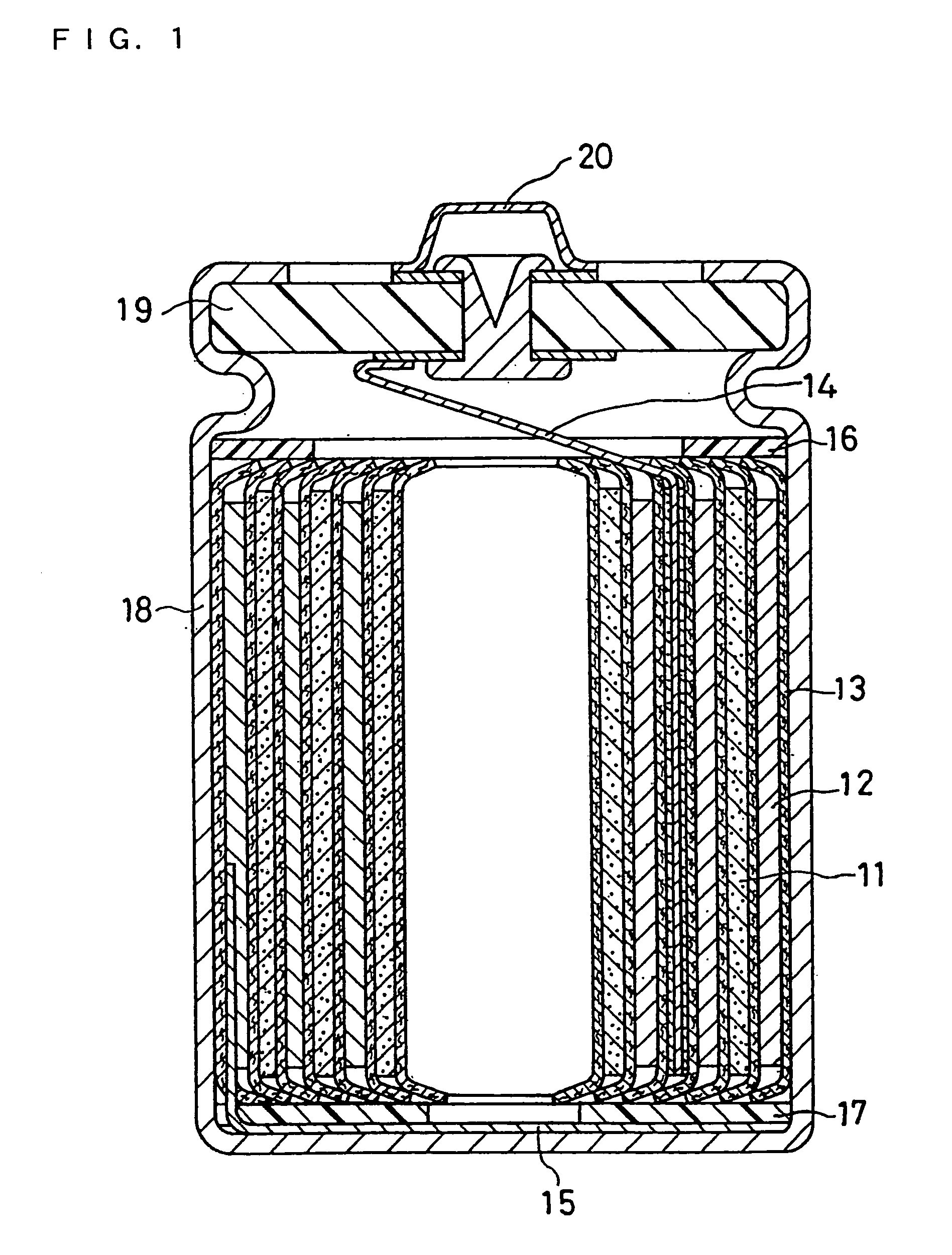Lithium ion secondary battery and charging method therefor, and charge or charge/discharge control system for lithium ion secondary battery
a lithium ion secondary battery and control system technology, applied in secondary cells, electrochemical generators, cell components, etc., can solve the problems of insufficient charge/discharge cycle life characteristics and decrease in current collection efficiency, so as to prevent poor elasticity of porous electron-insulating film, suppress capacity decrease, and improve elasticity
- Summary
- Abstract
- Description
- Claims
- Application Information
AI Technical Summary
Benefits of technology
Problems solved by technology
Method used
Image
Examples
example 1
(a) Production of Positive Electrode
[0058] A positive electrode material mixture slurry was prepared by mixing, in a double blade mixer, 3 kg of lithium cobalt oxide (LiCoO2: positive electrode active material), 1 kg of #1320 manufactured by Kureha Chemical Industry Co., Ltd (NMP solution containing 12 wt % PVDF (positive electrode binder)), 90 g of acetylene black (conductive material) and an appropriate amount of NMP. The prepared slurry was then applied onto both surfaces of an aluminum foil (positive electrode current collector) having a thickness of 15 μm, followed by drying and rolling to form positive electrode active material layers. The total thickness of the aluminum foil and the active material layers formed on the both surfaces was 160 μm. The obtained electrode plate was then cut into a size suitable for the battery case for 18650 type cylindrical battery to give a positive electrode.
(b) Production of Negative Electrode
[0059] A negative electrode material mixture s...
example 2
[0069] A battery was produced in the same manner as in EXAMPLE 1 except that porous electron-insulating films each having a thickness of 1 μm were formed on both surfaces of the negative electrode.
example 3
[0070] A battery was produced in the same manner as in EXAMPLE 1 except that porous electron-insulating films each having a thickness of 5 μm were formed on both surfaces of the negative electrode.
PUM
 Login to View More
Login to View More Abstract
Description
Claims
Application Information
 Login to View More
Login to View More - R&D
- Intellectual Property
- Life Sciences
- Materials
- Tech Scout
- Unparalleled Data Quality
- Higher Quality Content
- 60% Fewer Hallucinations
Browse by: Latest US Patents, China's latest patents, Technical Efficacy Thesaurus, Application Domain, Technology Topic, Popular Technical Reports.
© 2025 PatSnap. All rights reserved.Legal|Privacy policy|Modern Slavery Act Transparency Statement|Sitemap|About US| Contact US: help@patsnap.com


